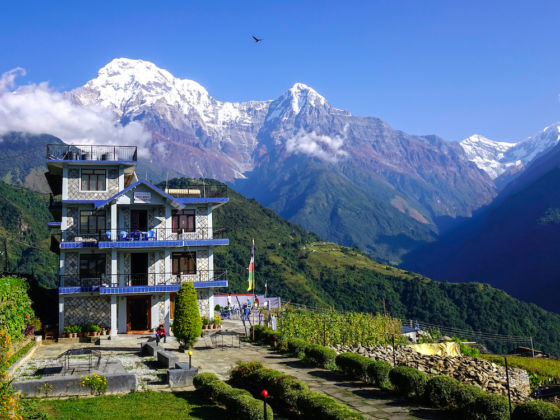Day 6: A.B.C. to Sinuwa
Hike time: 7.5hrs
5:30am. Porters banging on doors to awaken clients. No need for alarm clocks with all the commotion. Trekkers groggily arise and amble over the frosted trail to the lookout behind the lodges where the sun, cresting over Annapurna II and IV in the east, starts to shine on the tip of their eldest sibling.
We warmed our numb hands, snapped our last shots, and headed back to M.B.C. Only stopping occasionally to look back, we were thankful for the final glances before the fullness of the peaks was out of view.
